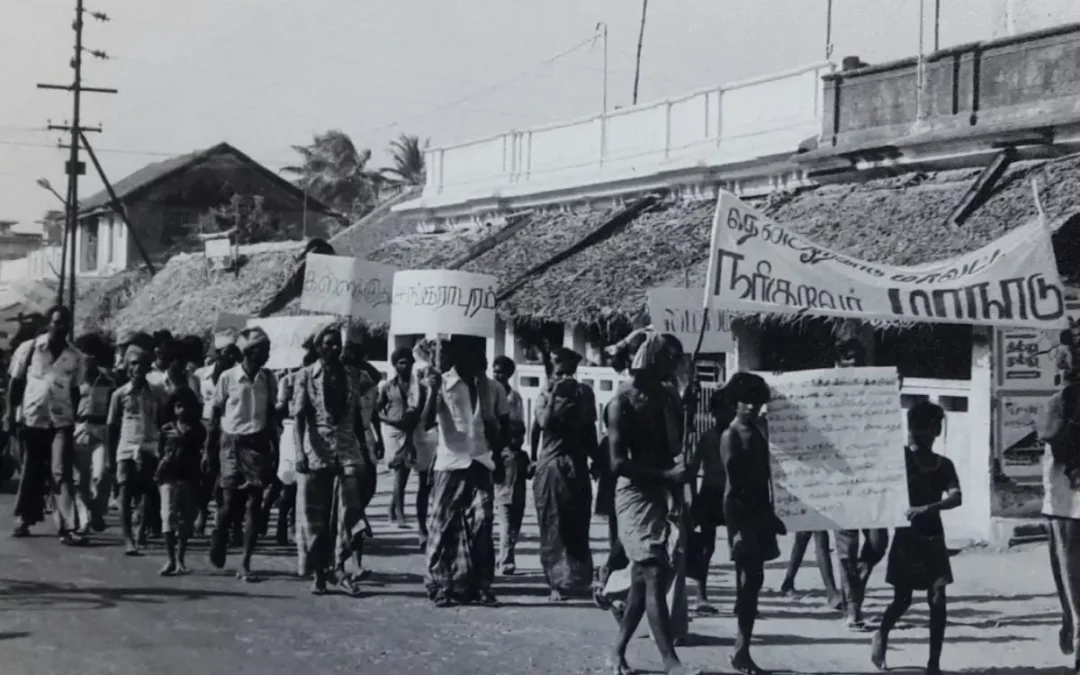Read in : தமிழ்
The union government’s decision to include Narikuravars in the list of Scheduled Tribes – a welcome migration from the MBC list – has not come out of the blue. It is a hard-earned final victory for the long suppressed people’s struggle of sweat, tears and blood.
The air had long been thick with myths and misconceptions that the Narikuravars with their nomadic nature of life and profession could never be integrated. Proving the detractors wrong was a long and laborious transition. Initially reluctant to give up their lifestyle, they had decide to take the plunge and wanted to enter mainstream life. They came together and organized a conference and took a rally more than 40 years ago. It was their way of registering their presence.
It was not until 1980 that the people, who had been denied full benefits of reservation as they were in the MBC list, were brought together as a force asserting their presence on the Tamil landscape
No political party and social outfit was ready to chip in with its support to lend voice to the voiceless Nariukavars. It was during the regime of Kamaraj that the Narikuravars were allotted plots at Polur with a long-term vision of enabling them to lead a stable life and ending their nomadic lifestyle.
It was not until 1980 that the people, who had been denied full benefits of reservation as they were in the MBC list, were brought together as a force asserting their presence on the Tamil landscape. It was social activist Bodhi Devavaram, organizer of the Tamil Nadu Narikuravar Peravai, who coordinated with the Narikuravars in the Chennai-Chengalpattu belt and instilled in them a sense of unity and purpose.
Also Read: Govt’s ST status for the Narikuravar marks the end of a long struggle
Sharing his experiences and perspectives with inmathi.com, Devavaram said, “We identified their dwelling places in 38 villages and small towns in the two districts of Chennai and Chengalpattu. Our persistent efforts and continuous meetings with them finally culminated in the conference of the Chennai and Chengalpattu districts’ Narikuravars held in the community hall of the St. Andrews Kerg Church on the Poonamallee High Road in 1980. The management of the church allowed us to use their community hall free of cost and also provided lunch to 800 participants.

Bodhi Devavaram, coordinator of Tamil Nadu Narikuravar Peravai.
Moreover, members of Navaniramana Social Education Centre on the campus of Stella Mary’s College and the students of the Madras School of Social Work worked as volunteers for the conference. Gnanasoundari and Raghupathi, who were wardens of the Narikurava students’ hostel functioning on behalf of the Sivananda Ashram at Saidapet with the monetary aid of the Tamil Nadu Backward Classes Welfare department, also took part in the conference.”
The conference passed several resolutions which revealed the community’s resolve to get ST status. It was decided to press the state and union governments to recognize Narikuravas as a Scheduled Tribe. The meet condemned the misconception among the general public that the Narikuravas were a nomadic tribe. It was brought out that they moved from place to place only to earn their livelihood and, on that count, should not be denigrated and disrespected, the conference said in no uncertain terms.
The Narikuravas wanted to live a settled life and so those living on the government land should not be vacated, the meeting said.
The conference held over 40 years ago set the tone for the community’s long saga of struggles that have finally earned them the crowning success in the form of the ST status.
Read in : தமிழ்











